
This week’s Friday video is an in-depth dive into the ways that the Tudors stored and preserved their food. Don’t think that they used spices to make bad food taste good as that would be completely wrong.
[Read More...]
This week’s Friday video is an in-depth dive into the ways that the Tudors stored and preserved their food. Don’t think that they used spices to make bad food taste good as that would be completely wrong.
[Read More...]
On this day in Tudor history, 21st October 1536, during the Pilgrimage of Grace rebellion, Lancaster Herald had an encounter with armed peasants on his way to Pontefract Castle and then met with the rebel leader, Robert Aske, at the castle.
The meeting didn’t go well, with Aske putting his foot down and not allowing the herald to complete his mission.
What was going on? Who was Lancaster Herald? What was his mission?
[Read More...]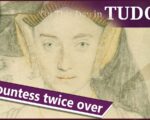
On this day in Tudor history, 20th October 1557, or possibly 21st, courtier Mary Arundell died at Bath Place in London.
Mary is an interesting Tudor lady. Not only did she serve at least two of Henry VIII’s wives, but she was a countess twice over, having been married to both the Earls of Sussex and Arundel. She has also been confused with two other Tudor ladies, and we don’t know whether the portrait you see in the thumbnail is really her.
Find out more about Mary Arundell’s life, court career and those of her husbands, in today’s talk from Claire Ridgway, founder of the Tudor Society.
[Read More...]
We all have our favourite Tudor people, don’t we? People we’d love to go back in time and meet or find out more about.
In this talk, I share which top 5 Tudor people I’d host a dinner party for, and explain why.
[Read More...]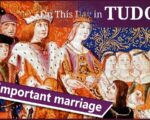
On this day in history, 19th October 1469, an event took place in Spain that was not only important in Spanish history, but which had an impact on Europe and which has links with the Tudors.
The event was the marriage of an eighteen-year-old woman called Isabella and a seventeen-year-old man called Ferdinand.
They’d become the famous Reyes Catolicos, the Catholic monarchs, Isabella I of Castile and Ferdinand II of Aragon, and would bring together two powerful kingdoms, which comprised most of what is modern-day Spain.
In this talk, I tell you more about this powerful couple, their reigns and their legacy.
[Read More...]
Everyone had a fun chat on Friday with Claire on the members-only Facebook page. The topics were diverse but a lot was taken up with discussing who would be the best Tudor people to have around for a meal!
[Read More...]
On this day in Tudor history, 18th October 1555, Elizabeth, daughter of Henry VIII and Anne Boleyn, finally received permission from her half-sister, Queen Mary I, to leave court and travel to her own estate at Hatfield, rather than return to house arrest in Woodstock.
Poor Elizabeth had spent the last 18 months being watched or imprisoned, so this must have been a huge relief.
But why had Elizabeth been watched and confined? What had she gone through and why?
Find out more about this awful part of Elizabeth I’s life…
[Read More...]
This week has been the anniversary of the birth of King Edward VI, the third Tudor monarch, on 12th October 1537, so I thought we’d celebrate his birthday with a crossword puzzle on Edward VI’s early life.
Test your knowledge of this Tudor king with this fun crossword puzzle.
[Read More...]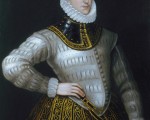
On this day in history, 17th October 1560, spy and Protestant martyr, Walter Marsh was baptised at St Stephen’s Church in London.
Marsh came to a sticky end, being burned to death in Rome’s Campo dei Fiori after having his tongue cut out, his hand cut off and being tortured with burning torches. He had been accused of being paid by Queen Elizabeth I to spy on Catholics and of showing contempt for the Eucharist.
Find out more about Walter Marsh, how he’d come to be in Rome and what he’d done to upset the authorities…
[Read More...]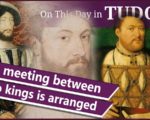
On this day in Tudor history, 16th October 1532, while Henry VIII and Anne Boleyn, Marquess of Pembroke, were on their visit to Calais, English nobles met French nobles to arrange a meeting between the King of England and his French counterpart, King Francis I.
In this video, I give details on this event, who was there, what happened, and why Henry VIII and Anne Boleyn had gone to Calais…
[Read More...]
On this day in Tudor history, 15th October 1584, schoolteacher and poet Richard Gwyn (Richard White), was hanged, drawn and quartered for high treason at Wrexham in Wales due to his Catholic faith.
Find out about Richard Gwyn’s life, how an attack by crows and kites made him steadfast in his faith, his arrest and downfall, his works, and the legends associated with his death…
[Read More...]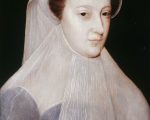
On this day in Tudor history, 14th October 1565, diplomat and poet, Sir Thomas Chaloner the Elder, died at his home in Clerkenwell, London. He was just forty-four years old. He’d served four Tudor monarchs as a diplomat, but he also wrote English and Latin works.
Find out more about Thomas Chaloner, his life, his career, and how his teeth saved him from death…
[Read More...]In the programme, which aired in the UK on BBC One, comedian Josh Widdicombe was having his family tree examined and he had an incredibly interesting one.
If you haven’t watched it yet, and plan to, then don’t read on! Although you can tell from the title and the photo that the Boleyns are involved!
Spoiler alert…
Josh found out first that he was related to the Barings of Barings Bank, and then he was told that he was descended from Henry Rich, 1st Earl of Holland. Holland served as Groom of the Stool to King Charles I and unfortunately ended his life on the scaffold due to being a Royalist in the Second English Civil War.
[Read More...]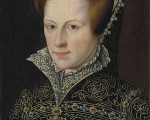
On this day in Tudor history, 13th October 1553, Queen Mary I wrote a very interesting letter to the imperial ambassador, Simon Renard. In it, she asked the ambassador to meet with her secretly, and she’d encouraged him previously to come to her secretly and in disguise.
Why? What was going on? And why did Mary seem to trust the emperor and his ambassadors more than her own council?
Find out more about the situation…
[Read More...]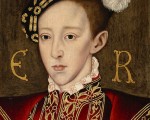
To mark the birth of King Edward VI on this day in history, 12th October 1537, I thought I’d share these resources with you…
[Read More...]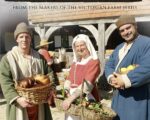
Thank you to Joan Saxton for this excellent question.
Joan asked:
“I am looking for documentaries or movies of the Tudor Period that authentically depict those times — real people doing real things, smells, all the nitty-gritty.
[Read More...]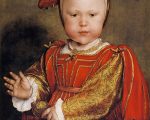
On this day in Tudor history, 12th October 1555, Lewis Owen, member of Parliament and administrator in Wales, was assassinated on Dugoed Mawddwy, a mountain pass.
Owen was murdered by a group of bandits as revenge for his campaign against them, which had led to around 80 hangings.
Find out more about Lewis Owen, his life and what happened…
[Read More...]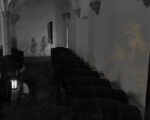
Do you have a good medieval or Tudor ghost story?
Halloween is on the way and I want to do a special spooky Halloween ghost story video featuring your stories.
If you have had a spooky experience or know a good historical ghost story (a Tudor ghost story would be brilliant) or local legend, please share by videoing yourself or emailing the story. Medieval or Tudor ones would be best, or ones linked to those types of historical buildings.
[Read More...]
On this day in Tudor history, 11th October 1532, King Henry VIII and Anne Boleyn, the newly created Marquess of Pembroke, set sail from Dover aboard the king’s ship, The Swallow.
They were off to Calais on a mission involving the Great Matter, Henry VIII’s quest for an annulment. But why? What would they do there? Who would they meet?
Find out more about this trip, what happened and what happened next…
[Read More...]
On this day in Tudor history, 10th October 1588, Robert Dudley, Earl of Leicester, was buried in the Beauchamp Chapel of the Collegiate Church of St Mary, Warwick, according to his instructions.
His funeral was well-attended and his widow, Lettice, a woman known by Elizabeth I as “the she-wolf”, erected a monument to “her best and dearest husband” in the chapel, which was also the resting place of the couple’s young son, Robert, “the noble impe”.
Find out more about Leicester’s funeral and resting place, and see some photos of his tomb…
[Read More...]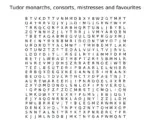
This Sunday, we’re testing your knowledge of Tudor monarchs, consorts, mistresses and favourites with a fun word search puzzle.
Note: the words can go in any direction!
[Read More...]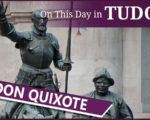
On this day in Tudor history, 9th October 1547, Miguel de Cervantes, author of the famous classic “Don Quixote”, a book known as “the first modern novel”, was baptised in Alcalá de Henares, Spain. His actual birthdate is unknown.
Now, this event didn’t happen in Tudor England, but it did happen in the Tudor period, and Cervantes is known the world over. Let me share with you some facts about this man, his rather interesting life, which including being held to ransom by pirates, and his works…
[Read More...]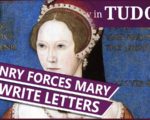
On this day in Tudor history, 8th October 1536, while the Pilgrimage of Grace rebellion was getting underway in Lincolnshire and spreading to Yorkshire, Henry VIII wasn’t only issuing orders regarding the rebels, he was also issuing orders regarding his eldest daughter.
Henry and Mary had recently reconciled after Mary had finally submitted to him and recognised his supremacy and her illegitimate status. It was something that cost Mary dearly, but it did mend her relationship with her father and allow her back at court.
But then Henry VIII put more pressure on his daughter by forcing her to write to the pope and to Mary of Hungary, the emperor’s sister.
What did Mary have to write? What did the king want of his daughter? And why had Mary submitted to her father?
Find out all about this…
[Read More...]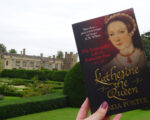
Today’s Friday video is a stunning look at Sudeley Castle from Lil, along with her wonderful review of Katherine the Queen by Linda Porter. Lil even reads a few perfect extracts for us from the beautiful grounds of Sudeley.
[Read More...]
Just a reminder that October’s informal live chat will be taking place tomorrow, Friday 8th October. This is a wonderful opportunity to get to know other Tudor Society members and to just talk Tudor. An hour of Tudor bliss!
The chatroom can be found at https://www.tudorsociety.com/chatroom/ and the chat will last about an hour.
Here are the times in different time zones. If your time zone isn’t listed you can use https://www.timeanddate.com/worldclock/converter.html to convert the London time to your zone.
[Read More...]
On this day in Tudor history, 7th October 1529, Pope Clement VII wrote to King Henry VIII regarding his quest for an annulment of his marriage to Catherine of Aragon.
It wasn’t good news. Catherine of Aragon had won this battle, with the pope deciding that the marriage was valid, but she hadn’t won the war. Henry VIII did get the marriage annulled in the end, but the pope didn’t do it.
But what was going on? Why wouldn’t the pope help? What was Henry VIII’s argument for an annulment and on what grounds did Catherine appeal?
Find out more…
[Read More...]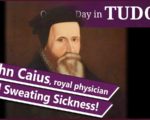
On this day in Tudor history, 6th October 1510, John Caius was born at Norwich.
Caius was a theological scholar, founder of Gonville and Caius College, Cambridge, royal physician (to Edward VI, Mary I and Elizabeth I) and author of a book on sweating sickness.
In this video, I give an overview of John Caius’ life and career, as well as sharing some of what he wrote on sweating sickness, that mystery Tudor illness.
[Read More...]
On 10 September Claire Ridgway was in the Members Only Facebook Group answering questions on the best Tudor books for a wide range of topics, people and places. Here’s the video for those who were not able to attend.
[Read More...]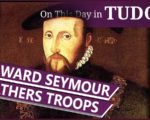
On this day in Tudor history, 5th October 1549, Edward Seymour, Duke of Somerset and Lord Protector, ordered a gathering of men at Hampton Court Palace, where he was lodged with the young King Edward VI, due to tensions mounting between Somerset and John Dudley, Earl of Warwick.
What was going on and what happened when 4,000 peasants turned up? How did John Dudley react and what did King Edward VI have to say about it all?
Find out what happened, and how this led to Somerset’s undoing…
[Read More...]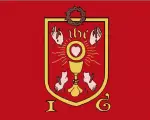
On this day in Tudor history, 4th October 1507, Sir Francis Bigod, was born at Seaton, in Hinderwell, Yorkshire.
Bigod led an uprising in Yorkshire in January 1537, Bigod’s Rebellion, after the rebels of the Pilgrimage of Grace had been dispersed. But who was Bigod? Why would an evangelical reformer become involved with the Pilgrimage of Grace? What was his rebellion about and what happened to him?
Find out more about Sir Francis Bigod and Bigod’s Rebellion…
[Read More...]